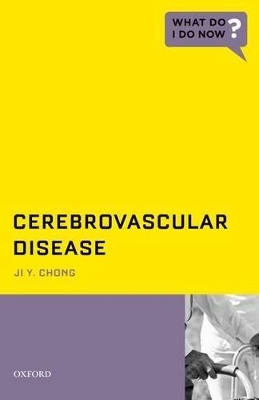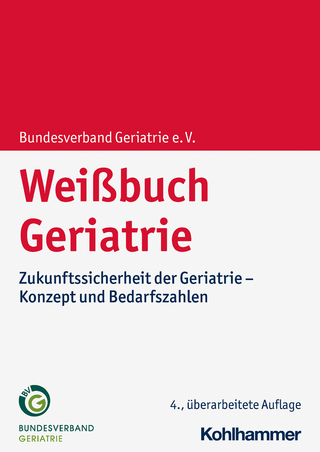
Cerebrovascular Disease
Oxford University Press Inc (Verlag)
978-0-19-990787-8 (ISBN)
Patients suffering from cerebrovascular disease pose many clinical challenges and even experienced clinicians can arrive at the point where diagnostic, work-up, treatment, or prognostic thinking falters.
Authored by a vascular neurologist whose work spans the entire spectrum of this group of brain dysfunctions, Cerebrovascular Disease helps clinicians evaluate and manage patients suffering from stroke, embolism, thrombosis, hemorrhage, and other critical presentations. In a medical field where it's often difficult to distill the vast array of research and apply it in any meaningful clinical way, this next volume in the "What Do I Do Now?" series focuses on walking the clinician through evidence-based decision-making. Each clinical scenario featured in Cerebrovascular Disease describes in careful detail the presentation, diagnostic studies, treatment options, and rationale for handling these tricky cases.
Attending in Neurology and Director, Stroke Prevention Program, St. Luke's Roosevelt Hospital Center. Assistant Clinical Professor of Neurology, Columbia University.
Table of Contents ; Case 1 IV tPA for acute ischemic stroke ; IV tPA is the only FDA approved treatment for acute ischemic stroke. It needs to be delivered in a timely fashion, but select patients may be treated beyond the 3 hour window out to 4 and a half hours. ; Case 2 Endovascular treatment for acute ischemic stroke ; Select patients who are not eligible for IV tPA and are within an 8 hour window may be treated with other acute endovascular therapies. ; Case 3 Combination reperfusion therapy for acute stroke ; In patients who do not recanalize with IV tPA, adjunctive endovascular therapies may be used to improve reperfusion. ; Case 4 Hemorrhagic complications of tPA ; Intracerebral hemorrhage is a known complication of tPA. Different hemostatic agents can be used for symptomatic hemorrhage. ; Case 5 Stroke mimic and acute treatment ; Patients with stroke mimics and eligible for tPA may safely be treated. The diagnosis of a stroke mimic is typically made after the acute setting. ; Case 6 Minor stroke symptoms and acute treatment ; Patients with minor stroke symptoms or rapid improvement of symptoms are at high risk of worsening. Acute treatment with IV tPA may be warranted. ; Case 7 Hemicraniectomy for large MCA stroke ; Malignant MCA syndromes have high morbidity and mortality. Hemicraniectomy in select patients is life saving but patients often have significant disability. ; Case 8 Suboccipital decompression for cerebellar stroke ; Large cerebellar strokes can cause rapid neurological deterioration and death. Surgical decompression is an effective, life saving treatment. ; Case 9 Blood pressure management in acute stroke ; Blood pressure is commonly elevated after a stroke. Early lowering of blood pressure may worsen outcomes. ; Case 10 Primary prevention of stroke ; Screening for risk factors and treatment of modifiable risk factors will lower the risk of incident stroke. ; Case 11 Asymptomatic carotid stenosis ; Revascularization of high grade asymptomatic carotid stenosis in select patients can lower the risk of incident stroke. Endarterectomy and stenting are both associated with periprocedural risk. ; Case 12 Secondary stroke prevention after lacunar stroke ; Long term blood pressure management is important after lacunar stroke. Antiplatelet therapy should be instituted for secondary stroke prevention. ; Case 13 Secondary stroke prevention after stroke due to carotid stenosis ; Patients with symptomatic carotid stenosis benefit from revascularization. Carotid endarterectomy and carotid stenting are options for treatment. ; Case 14 Secondary stroke prevention after stroke due to intracranial atherosclerosis ; Medical therapy with antiplatelet therapy and aggressive risk factor control is the preferred treatment regimen for stroke prevention in patients with intracranial atherosclerosis. ; Case 15 Secondary stroke prevention after cardioembolic stroke ; Anticoagulation significantly lowers recurrent stroke risk in patients with atrial fibrillation. New oral anticoagulants offer options in addition to warfarin. ; Case 16 Secondary stroke prevention after cryptogenic stroke with PFO ; Medical therapy for patients with stroke and PFO include antiplatelet therapy or anticoagulation. PFO closure is not routinely recommended for stroke prevention. ; Case 17 Carotid dissecton ; Carotid dissection can be recognized by exam findings and radiographic studies. Treatment can include aspirin or anticoagulation. ; Case 18 Stroke in a young adult ; Traditional vascular risk factors can contribute to stroke in young adults. Other more unusual causes of stroke should be considered based on the clinical setting. ; Case 19 Mycotic aneurysm due to bacterial endocarditis ; Bacterial endocarditis can cause neurological complications including stroke, hemorrhage, and mycotic aneurysms. ; Case 20 Migrainous stroke ; Stroke can rarely occur in the setting of acute migraine. Other etiologies of stroke need to be investigated ; Case 21 Dural venous sinus thrombosis ; Intracranial venous thrombosis is a rare cause of stroke. Investigation for underlying prothrombotic state is needed. Treatment is typically with anticoagulation. ; Case 22 Moyamoya disease ; Moyamoya is a rare cause of stroke. Surgical intervention may reduce the risk of recurrent stroke. ; Case 23 Reversible cerebral vasoconstriction syndrome ; Reversible cerebral vasoconstriction syndrome can cause thunderclap headache, subarachnoid hemorrhage, and stroke. Angiographic findings of vasculopathy and resolution support this diagnosis. ; Case 24 TIA diagnosis and management ; TIA is a risk factor for subsequent stroke. Rapid evaluation and treatment reduce that risk. ; Case 25 Hypertensive ICH ; Hemorrhage due to hypertension usually occurs in subcortical locations. Prevention involves aggressive blood pressure control. ; Case 26 Cerebral amyloid angiopathy ; Cerebral amyloid angiopathy is more prevalent with advancing age. Recurrent lobar hemorrhage and white matter disease may be seen. ; Case 27 Intracerebral hemorrhage secondary to AVM ; AVMs may cause intracerebral hemorrhage. Treatment can be challenging and multimodal treatment is often required ; Case 28 Cavernous malformation ; Cavernous malformations may cause intracerebral hemorrhage and seizures. Surgical resection is considered in patients with accessible lesions and recurrent hemorrhage or refractory seizures. ; Case 29 Aneurysmal subarachnoid hemorrhage ; Diagnosis is made by CT scan in most cases, but lumbar puncture may be needed if CT findings are normal. Rapid evaluation and treatment are important because of the high morbidity and mortality. ; Case 30 Perimesencephalic SAH ; Perimesencephalic SAH is a more benign subset of SAH. Evaluation for aneurysm is obligatory. ; Case 31 Asymptomatic intracranial aneurysm ; Location and size of an intracranial aneurysm are helpful in stratifying risk of hemorrhage. Treatment may be observation, surgical clipping, or endovascular coiling.
| Reihe/Serie | What Do I Do Now |
|---|---|
| Verlagsort | New York |
| Sprache | englisch |
| Maße | 213 x 140 mm |
| Gewicht | 204 g |
| Themenwelt | Medizin / Pharmazie ► Medizinische Fachgebiete ► Geriatrie |
| Medizin / Pharmazie ► Medizinische Fachgebiete ► Neurologie | |
| Medizin / Pharmazie ► Pflege | |
| ISBN-10 | 0-19-990787-0 / 0199907870 |
| ISBN-13 | 978-0-19-990787-8 / 9780199907878 |
| Zustand | Neuware |
| Haben Sie eine Frage zum Produkt? |
aus dem Bereich


